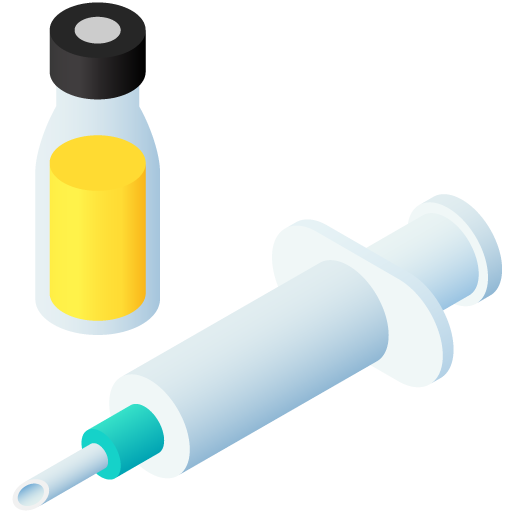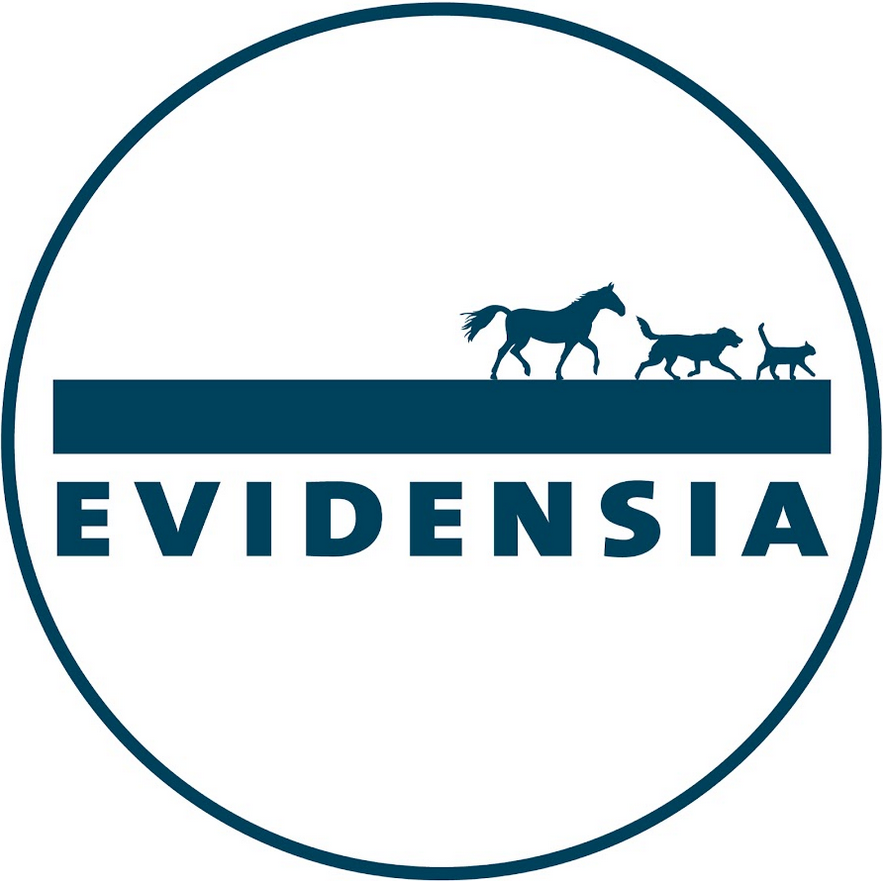Combination therapy
No results were found for your selected species
Ubac
ATC code
Species
Cattle.
Indications
For active immunisation of healthy cows and heifers to reduce the incidence of clinical intramammary infections caused by Streptococcus uberis, to reduce the somatic cell count in Streptococcus uberis positive quarter milk samples and to reduce milk production losses caused by Streptococcus uberis intramammary infections.
Onset of immunity: approximately 36 days after the second dose.
Duration of immunity: approximately the first 5 months of lactation.
Dose to be administered and administration route
Intramuscular use.
The injections should be preferably administered on the alternate sides of the neck. Allow the vaccine to reach a temperature of 15 °C to 25 °C before administration. Shake before use.
Administer one dose (2 ml) by deep intramuscular injection in the neck muscles according to the following immunisation program:
- First dose at approximately 60 days before the expected parturition date - Second dose at least 21 days before the expected parturition date - Third dose should be administered about 15 days after the calving.
Protection of animals not vaccinated following this program has not been demonstrated. This should be considered in case of herd vaccination.
The full immunisation program should be repeated with each gestation.
Adverse reactions
Cattle:
|
Very common (> 1 animal / 10 animals treated): |
Injection site swelling1 Elevated temperature2 |
|
Very rare (< 1 animal / 10 000 animals treated, including isolated reports): |
Anaphylactic -type reaction3 |
1 Local swelling more than 5 cm in diameter is very common after administration of the vaccine. This swelling will have disappeared or be clearly reduced in size by 17 days post vaccination. However, in some cases, swelling may persist for up to 4 weeks.
2 A transient increase in rectal temperature (mean increase of 1 °C but may be up to 2 °C in individual animals) may occur in the first 24 hours after injection.
3Anaphylactic-type reactions (e.g. oedema) which might be life-threatening, may occur in some sensitive animals. Under these circumstances, appropriate symptomatic treatment should be administered.
Reporting adverse events is important. It allows continuous safety monitoring of a veterinary medicinal product. Reports should be sent, preferably via a veterinarian, to either the marketing authorisation holder or its local representative or the national competent authority via the national reporting system. See the package leaflet for respective contact details.
Dispensing
POM-V - Prescription Only Medicine – VeterinarianSUMMARY OF PRODUCT CHARACTERISTICS
1. NAME OF THE VETERINARY MEDICINAL PRODUCT
UBAC emulsion for injection for cattle
2. QUALITATIVE AND QUANTITATIVE COMPOSITION
One dose (2 ml) contains:
Active substances:
Lipoteichoic acid (LTA) from Biofilm Adhesion Component (BAC) of Streptococcus uberis,
strain 5616.......................................................................................................≥ 1 RPU*
*Relative Potency Units (ELISA)
Adjuvant:
Montanide ISA.................................................................................................907.1 mg
Monophosphoryl Lipid A (MPLA)
For the full list of excipients, see section 6.1.
3. PHARMACEUTICAL FORM
Emulsion for injection.
White homogeneous emulsion.
4. CLINICAL PARTICULARS
4.1 Target species
Cattle.
4.2 Indications for use, specifying the target species
For active immunisation of healthy cows and heifers to reduce the incidence of clinical intramammary infections caused by Streptococcus uberis, to reduce the somatic cell count in Streptococcus uberis positive quarter milk samples and to reduce milk production losses caused by Streptococcus uberis intramammary infections.
Onset of immunity: approximately 36 days after the second dose.
Duration of immunity: approximately the first 5 months of lactation.
4.3 Contraindications
None.
4.4 Special warnings for each target species
Vaccinate healthy animals only.
The whole herd should be immunised.
Immunisation has to be considered as one component in a complex intramammary infection control program that addresses all important udder health factors (e.g. milking technique, dry-off and breeding management, hygiene, nutrition, housing, bedding, cow comfort, air and water quality and health monitoring) and other management practices.
4.5 Special precautions for use
Special precautions for use in animals Vaccinate only healthy animals.
Special precautions to be taken by the person administering the veterinary medicinal product to animals To the user:
This veterinary medicinal product contains mineral oil. Accidental injection/selfinjection may result in severe pain and swelling, particularly if injected into a joint or finger, and in rare cases could result in the loss of the affected finger if prompt medical attention is not given.
If you are accidentally injected with this veterinary medicinal product, seek prompt medical advice even if only a very small amount is injected and take the package leaflet with you.
If pain persists for more than 12 hours after medical examination, seek medical advice again.
To the physician:
This veterinary medicinal product contains mineral oil. Even if small amounts have been injected, accidental injection with this product can cause intense swelling, which may, for example, result in ischaemic necrosis and even the loss of a digit. Expert, PROMPT, surgical attention is required and may necessitate early incision and irrigation of the injected area, especially where there is involvement of finger pulp or tendon.
4.6 Adverse reactions (frequency and seriousness)
Local swelling more than 5 cm in diameter at the injection site is a very common reaction after administration of the vaccine. This swelling will have disappeared or be clearly reduced in size by 17 days post vaccination. However, in some cases, swelling may persist for up to 4 weeks.
A transient increase in rectal temperature (mean increase of 1 °C but may be up to 2 °C in individual animals) may very commonly occur in the first 24 hours after injection.
Anaphylactic-type reactions (e.g. oedema) which might be life-threatening, may occur very rarely in some sensitive animals based on post-marketing safety experience.
Under these circumstances, appropriate symptomatic treatment should be administered.
The frequency of adverse reactions is defined using the following convention:
- very common (more than 1 in 10 animals treated displaying adverse reaction(s))
- common (more than 1 but less than 10 animals in 100 animals treated)
- uncommon (more than 1 but less than 10 animals in 1,000 animals treated)
- rare (more than 1 but less than 10 animals in 10,000 animals treated)
- very rare (less than 1 animal in 10,000 animals treated, including isolated reports).
4.7 Use during pregnancy, lactation or lay
Can be used during pregnancy and lactation.
4.8 Interaction with other medicinal products and other forms of interaction
No information is available on the safety and efficacy of this vaccine when used with any other veterinary medicinal product. A decision to use this vaccine before or after any other veterinary medicinal product therefore needs to be made on a case by case basis.
4.9 Amounts to be administered and administration route
Intramuscular use. The injections should be preferably administered on the alternate sides of the neck. Allow the vaccine to reach a temperature of +15 to + 25 °C before administration. Shake before use.
Administer one dose (2 ml) by deep intramuscular injection in the neck muscles according to the following immunisation program:
- First dose at approximately 60 days before the expected parturition date - Second dose at least 21 days before the expected parturition date - Third dose should be administered about 15 days after the calving.
Protection of animals not vaccinated following this program has not been demonstrated. This should be considered in case of herd vaccination.
The full immunisation program should be repeated with each gestation.
4.10 Overdose (symptoms, emergency procedures, antidotes), if necessary
No information is available.
4.11 Withdrawal period(s) Zero days.
5. IMMUNOLOGICAL PROPERTIES
Pharmacotherapeutic group: Immunologicals for bovidae, inactivated bacterial vaccines for cattle.
ATCvet code: QI02AB.
Subunit vaccine to stimulate active immunity against Streptococcus uberis.
In a multicentre field study, the incidence of new cases of Streptococcus uberis clinical intramammary infection in the group vaccinated with UBAC was 50% lower than the incidence in the placebo group (6.1% versus 12.2%) which was statistically significantly different (p=0.012). Bearing in mind that some cows had suffered more than one episode of Streptococcus uberis clinical intramammary infection, the incidence of cows with clinical intramammary infection was 52.5% lower in the vaccinated group than those of the placebo group (4.7% versus 9.9%), with a statistical significance of p<0.017.
6. PHARMACEUTICAL PARTICULARS
6.1 List of excipients
Montanide ISA
Monophosphoryl Lipid A (MPLA)
Disodium phosphate dodecahydrate
Potassium dihydrogen phosphate
Sodium chloride
Potassium chloride
Water for injections
6.2 Major incompatibilities
Do not mix with any other veterinary medicinal product.
6.3 Shelf life
Shelf life of the veterinary medicinal product as packaged for sale: 24 months. Shelf life after first opening the immediate packaging: use immediately.
6.4 Special precautions for storage
Store and transport refrigerated (2 ºC – 8 °C) and protected from light. Do not freeze.
6.5 Nature and composition of immediate packaging
Type I colourless glass vials of 3 ml.
Polyethylene (PET) vials of 10, 50 and 100 ml.
The vials are closed with a rubber stopper and aluminium cap.
Pack sizes:
Cardboard box with 20 glass vials of 1 dose (2 ml).
Cardboard box with 1 PET vial of 5 doses (10 ml).
Cardboard box with 1 PET vial of 25 doses (50 ml).
Cardboard box with 1 PET vial of 50 doses (100 ml).
Not all pack sizes may be marketed.
6.6 Special precautions for the disposal of unused veterinary medicinal product or waste materials derived from the use of such products
Any unused veterinary medicinal product or waste materials derived from such veterinary medicinal products should be disposed of in accordance with local requirements.
7. MARKETING AUTHORISATION HOLDER
Laboratorios Hipra SA
Avda La Selva 135
17170 Amer (Girona)
Spain
8. MARKETING AUTHORISATION NUMBER
Vm 17533/5011
9. DATE OF FIRST AUTHORISATION
26 July 2018
10. DATE OF REVISION OF THE TEXT
January 2023

Approved: 24 January 2023

| Art. Nr. | 17533/5011 |
|---|---|
| EAN | 8427711183228 |
 TRUSTED SOURCE
TRUSTED SOURCE








